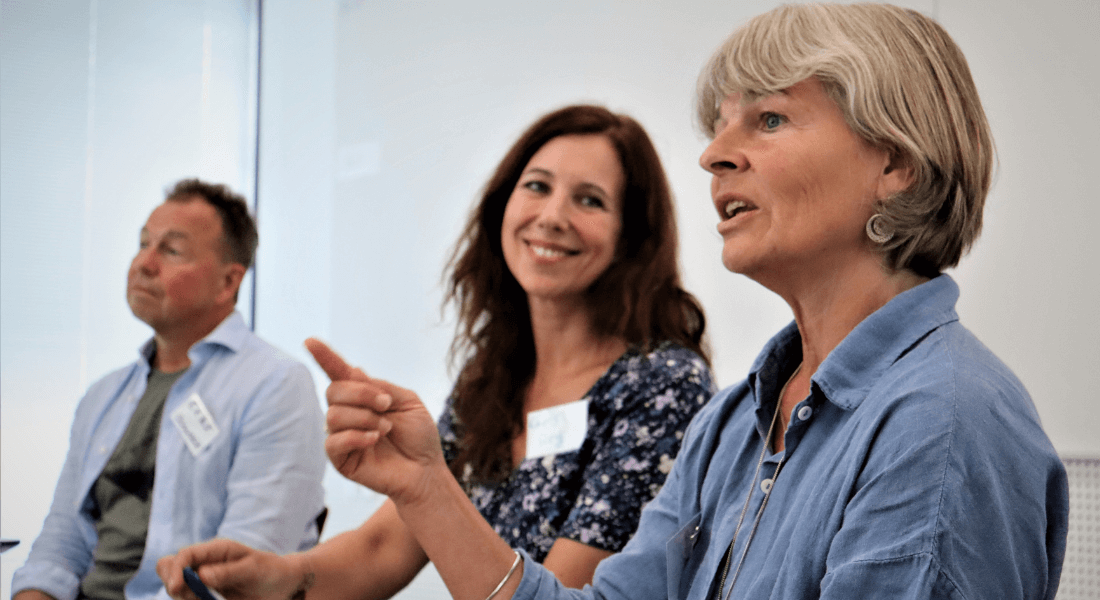Scientific language cannot be tested solely with pen and paper
Science is not merely a collection of terms and formulas but a practice. Assessing children's knowledge of science through pen-and-paper tests only evaluates a limited portion of what they know, says researcher.

Scientific language cannot be tested solely with pen and paper.
Science is not merely a collection of terms and formulas but a practice. Assessing children's knowledge of science through pen-and-paper tests only evaluates a limited portion of what they know, says researcher.
Spoken and written language take center stage when evaluating school students' scientific knowledge. However, this approach provides a narrow view of what students are actually capable of.
"We need to broaden the definition of what counts as scientific language," said Magdalena Kersting, an assistant professor at the Department of Science Education.
Magdalena Kersting is one of the coordinators for the Languages & Literacies in Science Education special interest group under the European Science Education Research Association (ESERA). The group recently held a two-day meeting in Copenhagen, where a major theme was determining who has access to scientific language.
"Today, we see that students are not recognized and receive poorer assessments if they don't use the correct scientific terminology," said Magdalena Kersting.
"We forget that scientific language is multimodal. Children express their scientific understanding through their actions before they can do so through speech and writing. Why do we still insist on correcting with the red pen and deducting points when the goal is to engage children in natural science?"
Driving change in education
The special interest group gathered around 30 researchers from all over the world to discuss the challenges of providing everyone with access to scientific language, especially during a panel debate featuring Professor Clas Olander (Malmö University), Professor Christina Siry (University of Luxembourg), Professor Eduardo Mortimer (Federal University of Minas Gerais), and Professor Kristina Danielsson (Stockholm University).

The panelists emphasized that there needs to be more consideration for the multifaceted ways in which students construct their scientific understanding in teaching and learning.
Even though the special interest group does not have all the answers, it's something researchers want to change, said Magdalena Kersting.
"The knowledge that the research field has built up over the last 10 years regarding multimodal learning has consequences for how we should design teaching and evaluate students. We hope that debates and meetings like this can be the driving force we need to improve science education."
Non-verbal scientific language
One of the areas researchers want to focus on is non-verbal communication, Magdalena Kersting explained.
"Students can both learn and communicate non-verbally through gestures and facial expressions or by drawing and moving. By keeping this in mind, teaching can become more inclusive and provide students with more ways to engage with science."
Such a shift in approach should emphasize that science is not only about learning a set of facts and terms but also about developing a deeper understanding through various forms of interaction and practice.
"It's about exploring, asking questions, observing, and experimenting—whether through words, images, or actions," said Magdalena Kersting.
Overlooking experiences
Another problem with heavily emphasizing spoken and written language is that teachers often fail to recognize the experiences students already have with science.
"Children are not empty vessels that we fill up. They come to the classroom with unique experiences and stories, and we risk overlooking that," said Magdalena Kersting.
There is significant potential in building upon students' own resources. The same applies to multilingual students, whose multilingualism is often seen as a challenge to be overcome, as discussed in the ESERA group meeting.
Multilingualism as a resource
Today, most classrooms have a significant number of students with multilingual backgrounds. Rather than correcting students, when they cannot find the correct words in the language of instruction, teachers should be viewed as a resource, expressed the panelists.
"Students with different languages can introduce new concepts. For example, we know that multilingual students use metaphors from one language in another to express their understanding. It may sound unusual, but it can still make sense," said Magdalena Kersting.
At the ESERA special interest group meeting, 14 countries from five continents were represented. Magdalena Kersting hopes that the group's discussions can spread and bring about changes in education.
Contact
Magdalena Kersting
Tenure Track Assistant Professor
Department of Science Education
University of Copenhagen
mkersting@ind.ku.dk
https://www.ind.ku.dk
+4535323775
